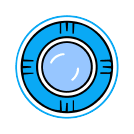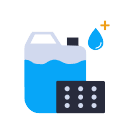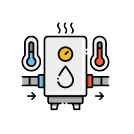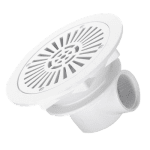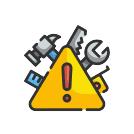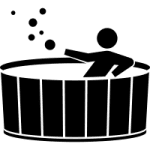Swimming pool maintenance training
Swimming pool maintenance training is essential for anyone tasked with keeping pools clean, safe, and operational. Whether you’re a professional pool technician, a facility manager, or a homeowner looking to maintain your own pool, proper training ensures that you understand the necessary procedures, equipment operation, safety protocols, and troubleshooting techniques. This training is crucial not only for maintaining water quality and equipment efficiency but also for preventing accidents and ensuring compliance with health and safety regulations. Here’s a comprehensive overview of what swimming pool maintenance training typically involves:
1. Basic Pool Chemistry (Swimming pool maintenance training)
Understanding pool chemistry is fundamental to maintaining water quality and ensuring swimmer comfort. Training in basic pool chemistry covers:
- Water Testing: How to use testing kits to measure pH levels, chlorine or sanitizer levels, alkalinity, and calcium hardness.
- Chemical Balancing: How to adjust chemical levels using pH increasers or decreasers, chlorine or other sanitizers, and alkalinity adjusters.
- Understanding Water Balance: The relationship between pH, alkalinity, and calcium hardness, and their impact on water clarity and equipment longevity.
2. Pool Cleaning Procedures (Swimming pool maintenance training)
Proper cleaning procedures are essential for maintaining a clean and inviting pool environment. Training typically covers:
- Skimming and Surface Cleaning: Using skimmer nets and brushes to remove leaves, debris, and insects from the water’s surface.
- Brushing: Techniques for brushing pool walls, steps, and corners to prevent algae growth and improve filtration efficiency.
- Vacuuming: How to use manual or automatic pool vacuums to clean debris from the pool floor and walls.
3. Filter Maintenance (Swimming pool maintenance training)
Pool filters play a critical role in removing debris and contaminants from the water. Training includes:
- Types of Filters: Understanding different filter types such as sand filters, cartridge filters, and DE filters.
- Cleaning and Backwashing: Proper procedures for cleaning or backwashing filters to maintain optimal filtration efficiency.
- Filter Replacement: When and how to replace filter media or cartridges based on manufacturer recommendations.
4. Pump and Equipment Operation (Swimming pool maintenance training)
Understanding pool pumps and equipment ensures efficient water circulation and optimal performance. Training covers:
- Pump Operation: How to operate and adjust pump settings for proper water flow and filtration.
- Equipment Inspection: Regular inspection of pump baskets, seals, and gaskets for leaks or damage.
- Energy Efficiency: Tips for maximizing pump efficiency and reducing energy consumption.
5. Safety and Compliance (Swimming pool maintenance training)
Safety is paramount in pool maintenance to prevent accidents and ensure compliance with regulations. Training includes:
- Chemical Handling Safety: Proper procedures for handling, storing, and disposing of pool chemicals safely.
- Personal Protective Equipment (PPE): The importance of using PPE such as gloves, goggles, and respirators when handling chemicals.
- Emergency Procedures: How to respond to pool emergencies, including drowning incidents, chemical spills, or equipment malfunctions.
6. Troubleshooting and Problem Solving (Swimming pool maintenance training)
Effective pool maintenance involves identifying and addressing issues promptly. Training covers:
- Common Pool Problems: Identifying and troubleshooting issues such as cloudy water, algae blooms, and equipment malfunctions.
- Water Quality Issues: Understanding the causes of pH imbalance, low sanitizer levels, or excessive algae growth.
- Diagnostic Tools: How to use water testing kits, pressure gauges, and other tools to diagnose problems.
7. Seasonal Maintenance and Specialized Services
Training also includes guidance on seasonal maintenance tasks and specialized services:
- Opening and Closing Procedures: Steps for properly opening the pool in spring and closing it in fall to protect against winter damage.
- Specialized Cleaning Services: Techniques for acid washing, tile cleaning, or removing stubborn stains or scale buildup.
8. Continuing Education and Updates
Pool maintenance professionals should stay informed about industry trends, new technologies, and updated regulations. Continuing education opportunities may include:
- Certification Programs: Courses that lead to certifications in pool operation or maintenance.
- Workshops and Seminars: Participation in industry conferences, workshops, or seminars on pool maintenance practices and innovations.
- Manufacturer Training: Training provided by pool equipment manufacturers on specific products and maintenance procedures.
Swimming pool maintenance training is essential for anyone looking to professionally manage or care for a pool. Proper training equips individuals with the knowledge and skills needed to maintain clean, safe, and well-functioning pools. This training is valuable for pool owners, maintenance staff, and pool service professionals, helping to prevent costly repairs and ensure optimal water quality.
Key Components of Swimming Pool Maintenance Training
- Water Chemistry Management: One of the most critical aspects of pool maintenance is understanding water chemistry. Training covers how to test and balance pH, chlorine levels, alkalinity, and calcium hardness. Maintaining proper water chemistry prevents bacteria growth, algae formation, and equipment damage. Participants learn how to use test kits and interpret results to make necessary chemical adjustments.
- Pool Cleaning Techniques: Training includes hands-on learning on the best practices for cleaning a pool. This includes skimming debris, vacuuming the pool, brushing walls and tiles, and maintaining proper water circulation. Regular cleaning helps to maintain clear water and prevent algae buildup.
- Filtration System Maintenance: Trainees learn how to maintain and troubleshoot different types of pool filters (sand, cartridge, and diatomaceous earth). The course covers how to clean and replace filters, backwash systems, and ensure proper water circulation, which is crucial for keeping pool water clean.
- Equipment Maintenance and Repairs: Pool maintenance training also includes basic knowledge of pool pumps, heaters, and other equipment. Participants are taught how to inspect, maintain, and make minor repairs to ensure smooth operation and avoid expensive breakdowns.
- Safety and Compliance: Understanding safety regulations, chemical handling, and pool equipment safety is a crucial part of the training. This ensures that pools are maintained in compliance with local health and safety standards.
By completing swimming pool maintenance training, individuals are equipped to provide thorough, professional care, ensuring safe and enjoyable swimming environments while prolonging the life of the pool and its equipment.
A well-maintained swimming pool is essential for the safety, comfort, and enjoyment of swimmers, as well as for the longevity of the pool itself. Pool maintenance training provides individuals with the knowledge and skills necessary to ensure pools remain clean, chemically balanced, and free of equipment issues. Whether for professional or personal purposes, proper training in pool maintenance covers core areas such as water chemistry, equipment handling, cleaning methods, and troubleshooting. This article offers an overview of essential topics covered in pool maintenance training and why these skills are beneficial for anyone managing a pool.
1. Understanding Pool Water Chemistry
One of the primary areas of focus in pool maintenance training is learning to balance water chemistry, which is crucial for both swimmer safety and pool upkeep. Proper water balance reduces the risk of harmful bacteria and algae growth, prevents skin and eye irritation, and prolongs the life of pool surfaces and equipment. Key water chemistry components covered in training include:
- pH Levels: Trainees learn how to test and adjust pH levels, which should typically range between 7.4 and 7.6. Water that is too acidic can corrode equipment and irritate skin, while alkaline water can cause scaling and cloudy water.
- Chlorine and Sanitization: Chlorine is the main sanitizer in pools, killing harmful bacteria and other pathogens. Proper training includes understanding free chlorine levels (typically 1.0 to 3.0 ppm) and knowing when to add more or perform a shock treatment to eliminate organic contaminants.
- Total Alkalinity: Maintaining proper alkalinity (80-120 ppm) stabilizes pH levels and prevents rapid fluctuations. Trainees learn to test and adjust alkalinity, often using alkalinity increasers or reducers.
- Calcium Hardness: Calcium hardness affects the pool’s surface and equipment. Low levels can cause etching, while high levels lead to scaling. Training covers how to maintain hardness within the ideal range of 200-400 ppm.
In addition to these basics, trainees learn about tools and techniques for testing water, interpreting results, and using pool chemicals safely.
2. Pool Cleaning Techniques
Routine cleaning is another vital part of pool maintenance training. Cleaning tasks help keep the pool free from debris, algae, and mineral buildup, ensuring a clean and inviting appearance. Key cleaning methods taught in training programs include:
- Skimming and Brushing: Trainees learn how to use a skimmer to remove floating debris and a pool brush to scrub walls, steps, and other surfaces. Brushing prevents algae buildup, especially in areas with lower water circulation.
- Vacuuming: Pool maintenance training includes hands-on experience with different types of vacuums—manual, automatic, and robotic. Participants learn the advantages of each vacuum type, as well as how to use them to thoroughly clean the pool floor.
- Tile and Waterline Cleaning: Cleaning the waterline is essential for preventing the buildup of oils, calcium deposits, and other residues. Trainees learn how to use appropriate cleaners and tools to maintain the pool’s waterline and tiles without damaging them.
3. Equipment Maintenance and Troubleshooting
Pool equipment, including pumps, filters, heaters, and chlorinators, requires regular maintenance to keep the pool functioning efficiently. Proper training provides an understanding of how these components work, common maintenance tasks, and basic troubleshooting techniques. Key areas covered include:
- Pump and Motor Maintenance: The pump circulates water through the pool system, ensuring even distribution of chemicals and filtration. Training covers how to inspect and clean the pump and motor, recognize unusual sounds or leaks, and perform basic repairs if necessary.
- Filter Care: Pool filters capture debris and contaminants. There are three main types of filters—sand, cartridge, and diatomaceous earth (DE)—and each has specific maintenance requirements. Trainees learn how to clean and backwash filters, as well as when to replace them for optimal performance.
- Heaters and Chlorinators: For pools with heaters and automatic chlorinators, training includes how to monitor and maintain these devices. Basic troubleshooting, such as addressing error codes or flow issues, is often covered.
4. Seasonal Pool Maintenance
Seasonal pool maintenance is essential for adapting to changing weather conditions and usage patterns. Training programs often cover procedures for opening and closing pools, such as:
- Pool Opening: At the start of the swimming season, trainees learn how to remove pool covers, check for leaks or cracks, and clean and balance the water. They also learn to inspect and test equipment to ensure everything is in working order.
- Pool Closing: Before winter, pools require special preparation to prevent freezing damage and protect equipment. Training covers how to lower the water level, add winterizing chemicals, and drain equipment lines. Proper closing ensures the pool is in good condition when it reopens.
5. Safety Practices and Regulations
Swimming pool maintenance also includes essential safety practices and regulatory knowledge to ensure compliance and protect both users and pool caretakers. Pool maintenance training typically covers:
- Chemical Safety: Handling pool chemicals requires caution to prevent accidents. Trainees learn proper storage, handling, and usage of chemicals, as well as first-aid procedures for chemical exposure.
- Local Regulations: Training programs often review local health and safety regulations regarding pool maintenance, which vary by region. Compliance with these standards is critical, especially for public pools, to avoid fines and ensure safety.
- Personal Protective Equipment (PPE): Maintenance workers are trained in using PPE, such as gloves, goggles, and masks, especially when handling chemicals or dealing with high-pressure equipment.
Benefits of Pool Maintenance Training
Pool maintenance training equips individuals with the skills to keep pools clean, safe, and inviting. For professionals, training leads to greater confidence and efficiency, allowing them to troubleshoot issues quickly and provide higher quality service. For private pool owners, training saves time, reduces maintenance costs, and enhances the overall swimming experience.
Conclusion
Swimming pool maintenance training is essential for ensuring pools are clean, safe, and compliant with health and safety standards. By equipping maintenance personnel with the knowledge and skills to perform routine cleaning, water testing, equipment operation, and emergency response effectively, training helps prevent issues and ensures a pleasant swimming experience for pool users. Whether you’re managing a commercial pool facility or maintaining a residential pool, investing in comprehensive training for pool maintenance pays off in terms of operational efficiency, longevity of pool equipment, and customer satisfaction.



